Once spring arrives, some of us will be looking to mow the lawn and start getting ready for the first grass cut of the year. This means dusting off the lawnmower and gardening tools to prepare for the season ahead. But when should we mow the lawn for the first time in a year and what important things should we consider?
Our lawns play an important part in our al fresco summer enjoyment – they host parties, provide a space to play, relax and read, and offer our borders and flora a plain backdrop from which they can shine. Therefore, it’s crucial we get the first grass cut of the year just right to set our lawns up for a summer of use. Here are some practical tips on how to mow the lawn for the first time this year.
WHEN SHOULD YOU MOW THE LAWN FOR THE FIRST TIME THAT YEAR?
Although the difference in climate can vary depending on where you are in the country, In Indiana, research has shown that the first two weeks in April are the most popular time to dig the lawnmower out for the first grass cut of the year.
1. DON’T MOW ALL OF YOUR LAWN
Choose the part you’d like to be neat and tidy but then let the rest stay a little messy. This is much better for wildlife and will encourage habitats to flourish throughout summer. You could even plant some wildflower seeds here and make it a real visual feature of your garden.
2. CONSIDER A MOW PATH
In the spirit of helping wildlife, do you need a whole area to be mown or could a pathway leading through your wildflowers be enough? Remember that a rich garden ecosystem can keep pests under control naturally.
3. HAVE A PRE-CUT TIDY
After months of being starved of sunshine, your garden may look a little neglected. It’s important, before your first grass cut of the year, to take time to clear any mess around the area you wish to mow, including dead sticks, leaves, and any rubbish that may have gathered.
Check to see what is hiding in the garden; the likes of stones and thick branches may have made their way into the overgrown lawn and if the lawnmower catches these, it can damage the mower blade. Keeping the mower blade sharp is vital as the damage a dull blade can cause could be detrimental to the grass.
Don’t get rid of what you’ve collected. Add it to your wilder are as natural debris makes great habitats for wildlife.
4. CHECK FOR NESTING ANIMALS
Check the area you are about to mow for any animals that might have made it their home during winter. Hedgehogs can often be found in piles of grass and leaves. If you do find a habitat, consider mowing a different part of the lawn instead and leaving it be.
5. USE THE ONE THIRD RULE
When mowing your lawn for the first time, you should always follow the one-third rule: Never cut more than a third of the blade of grass off in one go. Cutting more than this can stress the grass.
You should gradually reduce the grass length over a number of weeks to reach the desired length. Cutting the grass too short, too fast, is known as ‘scalping’ which can lead to disease and weed infestation.
6. AND IF YOUR GRASS IS REALLY OUT OF CONTROL?
If your lawn has been a little unkempt throughout the colder months and has grown with a mind of its own then fear not, still follow the one-third rule but take it in stages over a number of weeks. Gradually decrease the cutting height on your lawnmower each time to reach your preferred grass length.
But only apply this to the smaller area you’d like to maintain, as mentioned above. Embrace the wildness in the rest of the lawn and allow it to flourish.
7. CONTOUR YOUR GARDEN
Don’t forget about the edges when cutting your lawn for the first time. Overgrown edges can look unsightly and can mean time and effort spent working in the garden has been in vain. Trim the edges straight after mowing.
8. DON’T WATER IMMEDIATELY AFTER
It’s best to avoid getting into the habit of watering your lawn immediately after mowing. There is no specific point in the month to give your lawn a hose down – it should simply be done whenever it needs moisture – however, there are a few guidelines on what time it should be done during the day:
- Watering late in the evening or at night can lead to fungal problems due to the fact the grass doesn’t have time to dry out.
- The middle of the day tends to be when the sun is at its hottest, which can lead to the water evaporating instantly or the droplets acting as a magnifying glass, burning the blades of grass.
- Therefore, the best time is first thing in the morning as the air is cool and the water can travel to the roots before drying up.
9. KNOW HOW LONG TO LEAVE A NEW LAWN BEFORE CUTTING IT
New grass that has been grown from the seed will be noticeably weaker than the rest of the lawn and can be easily damaged if cut incorrectly. It’s best to wait until the grass has grown over three inches in length until mowing for the first time to allow it time to build up strength.
10. MAKE IT A HABIT
Following your first cut of the season, you may need to mow the maintained part of your lawn once or twice a week to maintain the length you desire. This is due to the warm weather encouraging your garden to grow.
DON’T FORGET TO SERVICE OR CHECK YOUR LAWNMOWER
After months of sitting in the shed, your lawn mower may be a little rusty. Don’t forget to check for chipped or blunt blades — these will bruise the grass. As well as this, remember to clean yours out regularly to remove a build-up of clippings. The better you take of your lawn mower, the longer it will last. Contact North Central Outdoor for any repairs or service needs you may have.
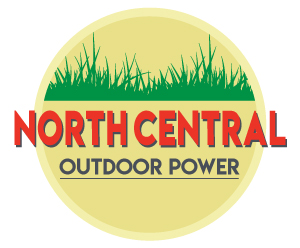
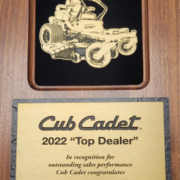
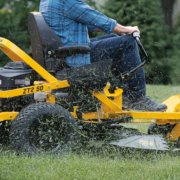
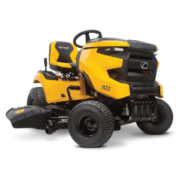
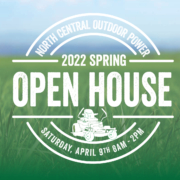
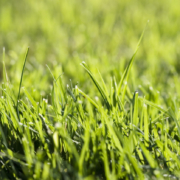
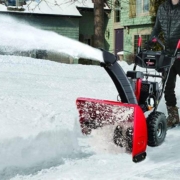
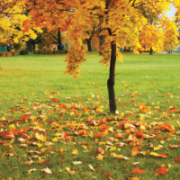
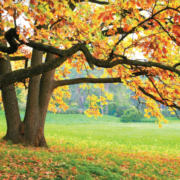
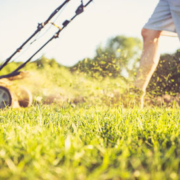
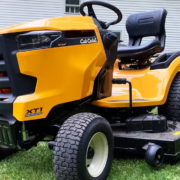
:max_bytes(150000):strip_icc():format(webp)/3SP4142782-4-d72817b532244eacbdd25d6a0715f1cc.jpg)
:max_bytes(150000):strip_icc():format(webp)/3SP4142782-5-effae72986214815a0b0c1e7016b9e1f.jpg)
:max_bytes(150000):strip_icc():format(webp)/3SP4142782-2-e10b54e064c7468688db37314fc93548.jpg)
:max_bytes(150000):strip_icc():format(webp)/3SP4142782-3-6c00e321077a492c8811dd859b38f602.jpg)